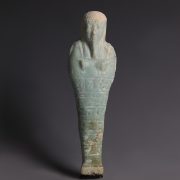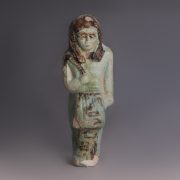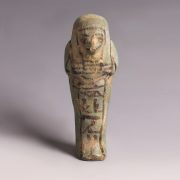How Ancient Egyptian Shabtis and Funerary Statuettes Watched Over the Dead
What were shabtis?
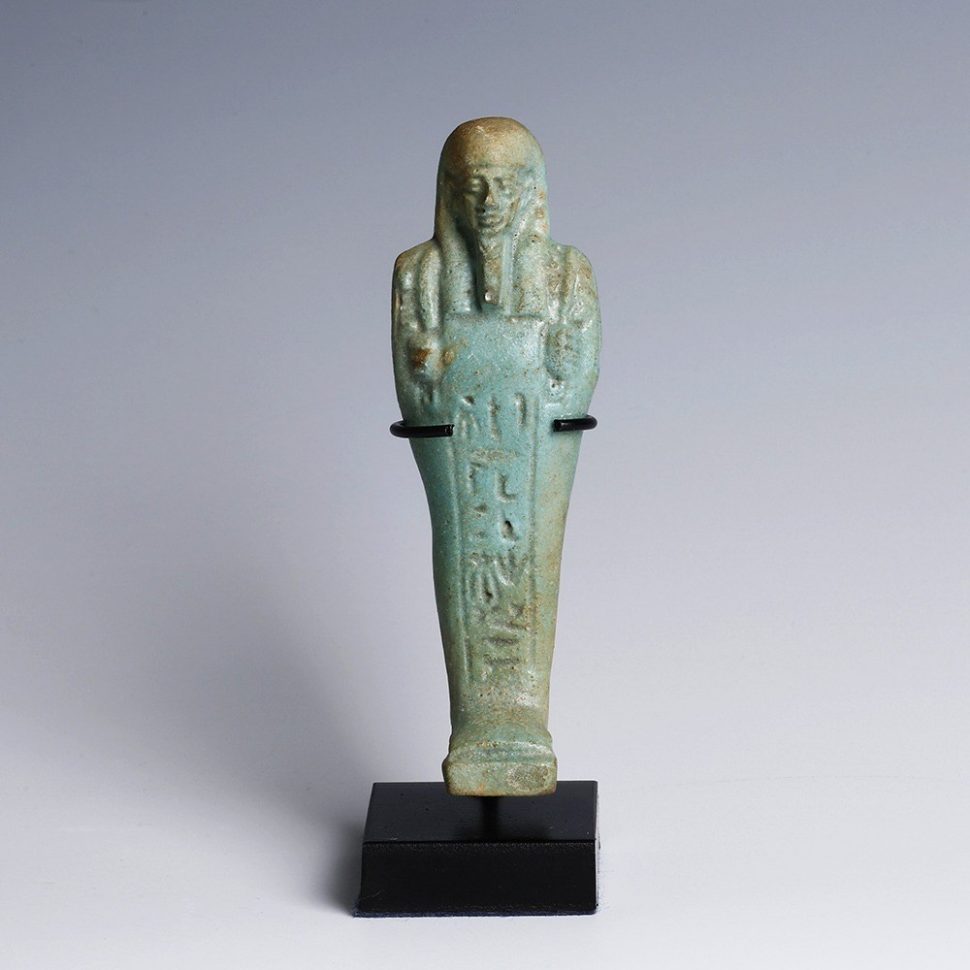
In ancient Egypt, shabtis were funerary statuettes placed in the tombs and used to accompany the deceased in the afterlife. They appeared at the end of the First Intermediate period. A shabti was a small human figurine who would perform a given task in the afterlife for the deceased, and therefore would sometimes be equipped with tools such as seed bags to work the fields. The word is believed to come from “swb”, meaning stick, due to the shabtis’ resemblance to wooden sticks, or from “wsb” meaning answerer, as their role was to answer their master’s call to work in the afterlife
Shabtis and funerary statuettes were frequently made of blue or green glazed faience but could also be made of wax, clay, wood, stone, terracotta and sometimes glass and bronze. Some rare shabtis also exist in alabaster. They usually are about 5 to 30 cm height.
How did they evolve through the years?
The most significant change has been the name. They were first called shabtis through both the Middle and the New Kingdoms and there was a short period between, during the Seventeenth Dynasty (1580 – 1550 BC), where the name shawabti was used. Finally, from the Twenty-first Dynasty, happening during the Third Intermediate Period (1070 – 664 BC), they were called ushabtis.
During the First Intermediate period, it was common to find statuettes of servants or mummy representations of the deceased in tombs. However, shabtis only started to appear in texts during the Middle Kingdom (2025 – 1700 BC) and were at first representations of the deceased, acting as surrogates, preventing the mummy of the deceased from being damaged and therefore protecting his eternal life. At the end of this period, shabtis began to feature inscriptions of magical formulas.
New Kingdom Shabtis
During the New Kingdom (1550 – 1070 BC), the figurines became servants who would fulfil various tasks in the name of the deceased in the afterlife and would therefore be equipped with hoes or seed bags. The tombs began to welcome an increased number of shabtis and it was common for nobles to have around 40 of them. By the end of the New Kingdom, the quality of the shabtis had declined since they were mass-produced in order to allow more people to be buried with them.
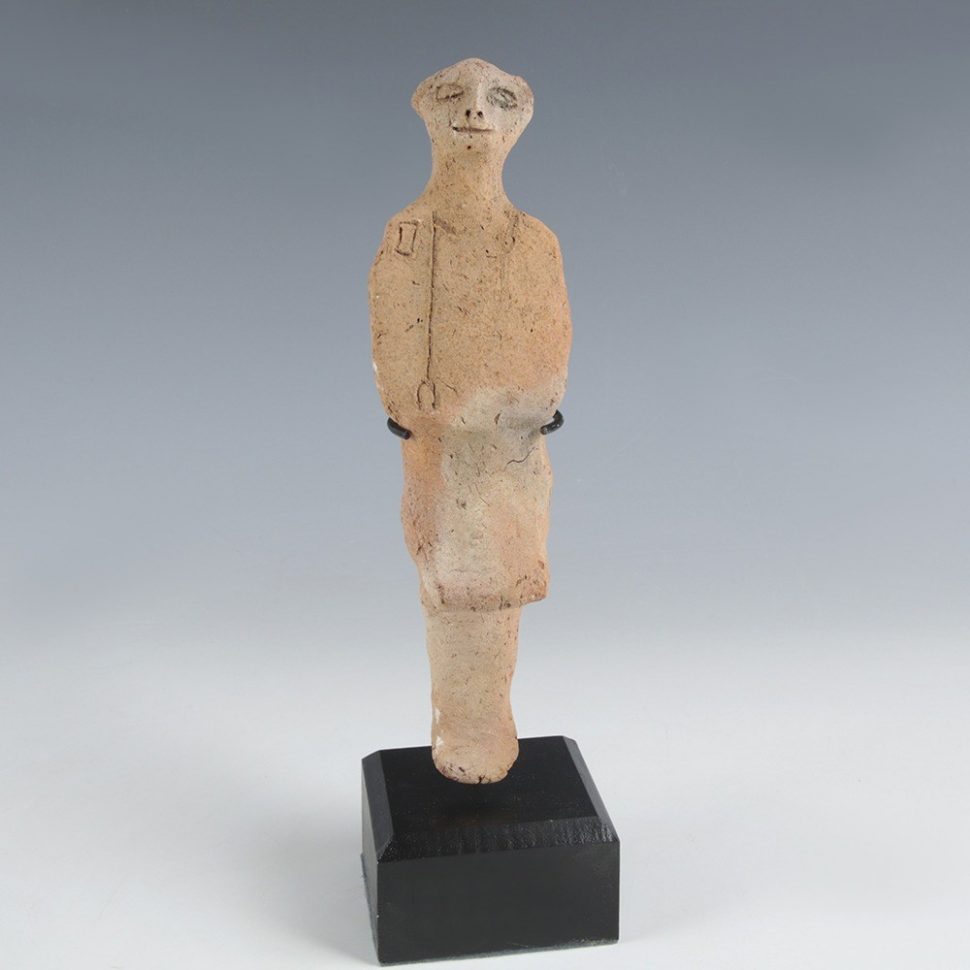
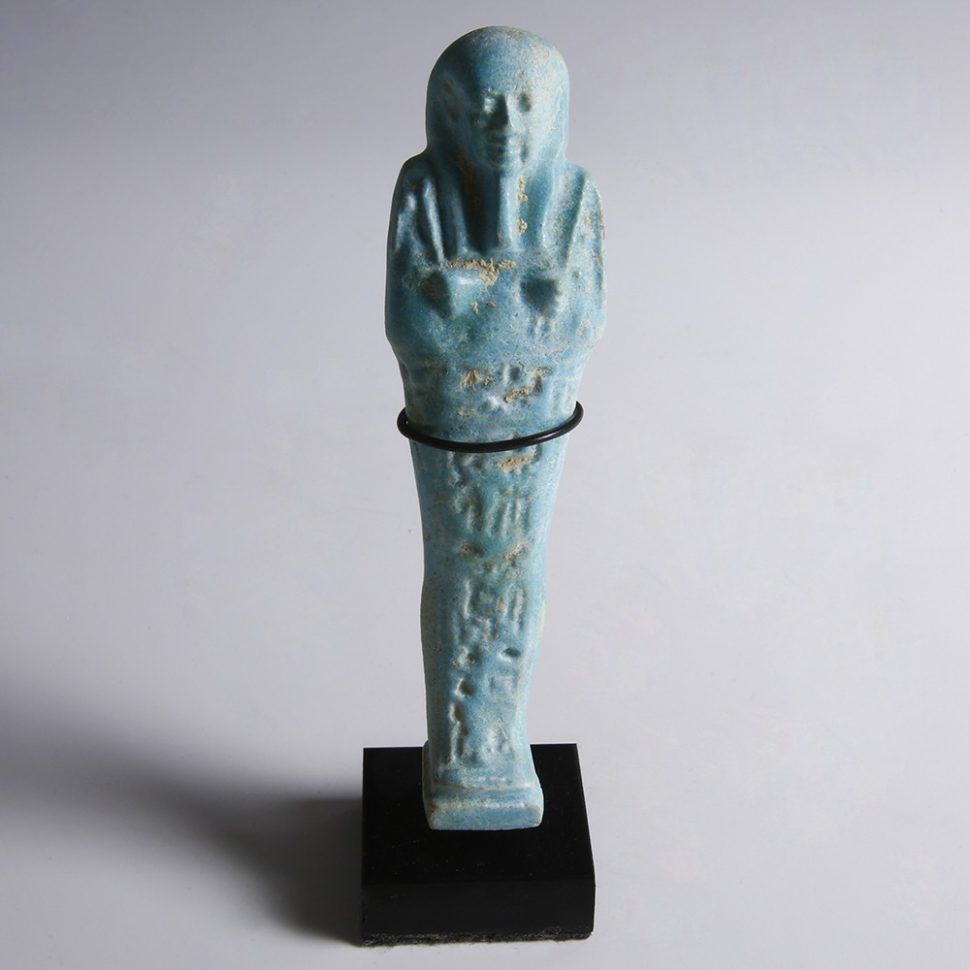
Third Intermediate Period Ushabtis
The Third Intermediate Period saw the name shabti changing into ushabti. There were two distinct groups of ushabtis: the 365 workers for each day of the year and the 36 overseers, each monitoring a group of ten workers, hence most burials included a total of 401 Ushabtis. However, the practice of including overseers was abandoned in the Late Period (664 – 525 BC).
Ptolemaic Period Ushabtis
During the Ptolemaic Period (323 – 30 BC), although some Ushabtis were well made, the general quality was very poor and hieroglyphic inscriptions were often faked since less people understood the complex language, and the cult of Osiris, god of the afterlife and the dead, began to lose popularity. As a consequence, the end of the Ptolemaic Period witnessed the abandon of Ushabtis.
Filed under: Ancient Egypt, Imagery & Symbolism Tags: , Egyptian Amulets, Egyptian Faience, Egyptian Shabtis, Egyptian Tombs, The Afterlife
Comments: Comments Off on How Ancient Egyptian Shabtis and Funerary Statuettes Watched Over the Dead
